人教版七年级英语语法总结课件
人教版七年级上册英语语法总结
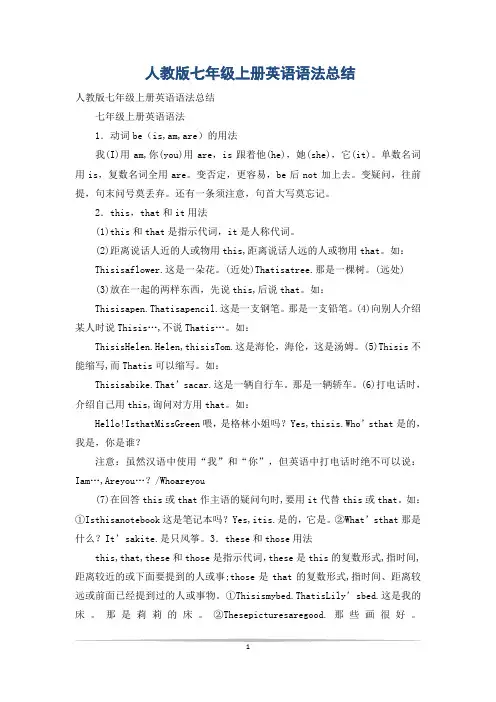
人教版七年级上册英语语法总结人教版七年级上册英语语法总结七年级上册英语语法1.动词be(is,am,are)的用法我(I)用am,你(you)用are,is跟着他(he),她(she),它(it)。
单数名词用is,复数名词全用are。
变否定,更容易,be后not加上去。
变疑问,往前提,句末问号莫丢弃。
还有一条须注意,句首大写莫忘记。
2.this,that和it用法(1)this和that是指示代词,it是人称代词。
(2)距离说话人近的人或物用this,距离说话人远的人或物用that。
如:Thisisaflower.这是一朵花。
(近处)Thatisatree.那是一棵树。
(远处)(3)放在一起的两样东西,先说this,后说that。
如:Thisisapen.Thatisapencil.这是一支钢笔。
那是一支铅笔。
(4)向别人介绍某人时说Thisis…,不说Thatis…。
如:ThisisHelen.Helen,thisisTom.这是海伦,海伦,这是汤姆。
(5)Thisis不能缩写,而Thatis可以缩写。
如:Thisisabike.That’sacar.这是一辆自行车。
那是一辆轿车。
(6)打电话时,介绍自己用this,询问对方用that。
如:Hello!IsthatMissGreen喂,是格林小姐吗?Yes,thisis.Who’sthat是的,我是,你是谁?注意:虽然汉语中使用“我”和“你”,但英语中打电话时绝不可以说:Iam…,Areyou…?/Whoareyou(7)在回答this或that作主语的疑问句时,要用it代替this或that。
如:①Isthisanotebook这是笔记本吗?Yes,itis.是的,它是。
②What’sthat那是什么?It’sakite.是只风筝。
3.these和those用法this,that,these和those是指示代词,these是this的复数形式,指时间,距离较近的或下面要提到的人或事;those是that的复数形式,指时间、距离较远或前面已经提到过的人或事物。
最新人教版七年级英语语法总结(精品)PPT课件

4)以辅音字母+结尾的动词,先变 “y”为 “i”,再+ed 如 study—studied cry---crie
祈使句的复习建议:
掌握祈使句的基本用法和基本形式: 1) 省略第二人称主语 you. 2) 祈使句的肯定形式:Do/Be 开头;
2. 不定冠词a /an 的位置:
a / an 除了位于名词短语之首之外,还有几种特例:
否定祈使句: Don’ t do / Don’ t be开头 3) 为表示礼貌,祈使句前或句末可加please.
句末用please时,please前用“,”隔开。
祈使句的基本含义: 表示请求、命令、劝说、号召、警告等。
1.Turn left on First Avenue and enjoy the city’s quiet streets and small parks
1) 泛指某人或某物 。如 Then an idea occurred to me.
2) 代表一类人或物,但没有one强烈 。 An elephant is heavier than a horse .
3) 用于某些词组或成语中。 As a matter of fact , I don’t like the story.
现在进行时讲解: 表示: 说话瞬间或现阶段正在进的动作。
(时态可以通过动词的变化形式来表示)
I am watching TV. The students are studying for the exams. She isn’t writing a letter now Is Nancy doing her homework? What are you doing now?
Unit 7 语法讲解 -2021-2022学年七年级英语上册课件(人教版)
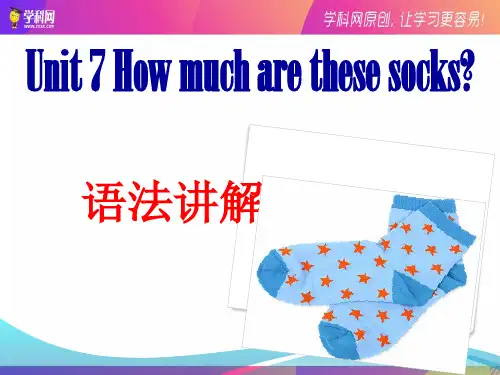
4. _H_o_w__m__u_c_h_a_r_e_t_h_e_s_o_cks? They’re three dollars. 5. _H_o_w__m__u_c_h_i_s_t_h_e_s_w_e_a_t_e_r? It’s nine dollars. 6. _H_o_w__m__u_c_h_i_s_th_e__s_k_ir_t?__ It’s eight dollars.
3. 其他表 What’s the price of + sth.? 达方式
回答 It’s + 价格.
例句
—What’s the price of the hat? —It’s ten yuan. —What’s the price of black socks? —It’s nine dollars.
For example:
How much are the socks?
Umm, they’re three dollars.
P39
Work in pairs. Try to make a conversation according to the pictures in 3b.
For example:
How much is/are…? A: It’s / They’re … B: I’ll take it / them. A: Here you are. B: Thank you. A: You are welcome.
A: Can I help you?
B: Yes, please. I want …
3. —那件棕色的毛衣多少钱? —八美元。 — _H_o_w__m__u_c_h_ is that _b_r_o_w_n__s_w_e_a_t_e_r_? —__It_’_s _e_i_g_h_t__ dollars.
人教版英语七年级上册Unit4 语法课件(方位介词)
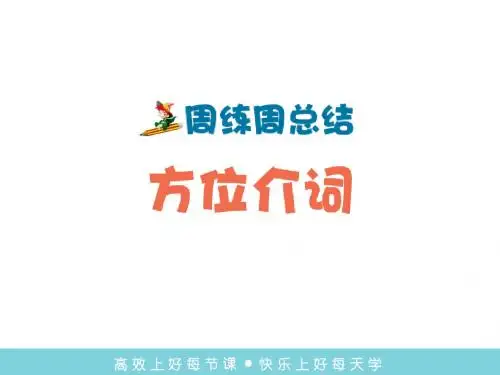
高效上好每节课·快乐上好每天学
易错点2
in, to 和on表示“位于”
in
表示在某一地区之内的方位(属于该范围)
to
表示在某一地区之外的方位(不属于该范围)
on 表示两地点相邻、接壤
A B
A
B
AB
B is in the east of A. B is to the east of A. B is on the east of A.
at the back of意为“在……的后部”,与in the front of互为反 义词组。 例:The boy was hiding behind a tree.那个男孩躲在一棵树后。
There is a blackboard at the back of our classroom. 我们教室后面有一块黑板。
高效上好每节课·快乐上好每天学
方位介词记忆秧歌
in在里面on在上,by和beside在近旁; above表示在上方,below恰好为反向。 若表正上用over,under表示正下方。 in front of表在前,反义behind在后面。 从里穿过用through,表面通过across。 进到里面用into,落到上面用onto。 from表示自何方,to和towards表朝向。 小小介词用处大,反复实践掌握它。
高效上好每节课·快乐上好每天学
4. 表示“在……附近/旁边”: by, beside, near
介词
用法
例句
by 表示“在旁边”,较near更近。M我y的h家ou在se河is边by。the river.
表示“近旁”、“紧靠”,相当 Come and sit beside me.
beside 于next to。
Unit1GrammarFocus课件人教版英语七年级下册(1)
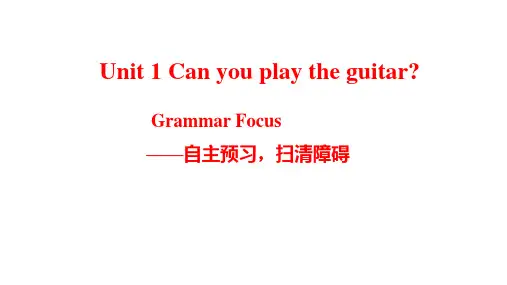
Earp says she hopes to continue( 继 续 ) helping people with
Alzheimer's in the future.
( B )9.A.to exercise
B.exercises
C.exercised
( C )10.A.they
B.them
C.Their
三 短文填空 John and Peter study in the same class.They are good
1.__fr_i_e_n_d_s__ . Both of them like 2._f_o_o_t_b_a_ll___ very much.From Monday to Friday, they often 3._g_o__ to play football on the playground after school.On 4._w__e_e_k_e_n_d_s_, their parents often take them to the city football club.Mr.Smith is their football 5.__te_a_c_h_e_r__.They can learn a lot from him.They practice football 6._f_o_r__ two hours a day.Although they sometimes feel 7.__t_ir_e_d__, they play it very well
四 Grammar Focus语法过关检测 1.Jim is good at__t_e_ll_in_g___(tell) stories, and he is a member of the story telling club. 2.Nick swims fast, so he_w__a_n_t_s _(want) to join the swimming club. 3.Can you sing or dance? Welcome to our school talent_s_h_o_w__s_(show).
Unit 6 单元知识点总结课件--七年级英语下册(人教版)
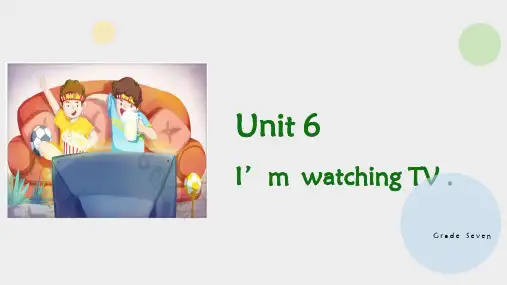
A.She is washing the clothes
B.She often washes the dishes
C.She exercises
D.She goes to the movies
3.—Is she doing her homework? —________.
A.Yes, she is B.No, she is
单项选择
1.I don’t understand what you said. Would you please give me ________
example?
A.another
B.other
C.others
D.the other
2.Some students are running around the lake and ________ students are
2.7 other
other意为“另外的,其他的”,常修饰可数名词复数,作定语 【辨析】other,the other,others,the others与another
有数量限制(特指) 没有数量限制(泛指)
(空)后面没有名词 the others others
(空)后面有名词 the other other
Be+主语+现在分词+其他?
例句 Look! Sam is watching TV happily on the sofa. 看!萨姆正在沙发 上高兴地看电视。
They are not playing basketball now. 他们现在没有在打篮球。
Are the children flying kites in the park?孩子们正在公园里放风筝 吗?
新人教版七年级英语上册Unit4 单元语法聚焦课件(共19张PPT)
语法点击
where引导的特殊疑问句及表示方位的介词 1.Where引导的特殊疑问句 结构:(1)Where+be+主语?(2)Where+do/does+主语? 本单元只讲第一种结构。在该结构中,be动词的形式取决于 后面的主语。当主语是单数可数名词或不可数名词时,be动 词用is,为了避免重复,回答时,通常用it/he/she代替上文出 现过的名词;当主语为可数名词复数时,be动词用are,回答 时通常用they代替上文出现过的名词。即:
单元语法聚焦四
2. 表示方位的介词 (1)介词一般位于名词或代词前,表示该词与其他成分的关系。 (2)常用的方位介词(短语): in front of在……(外部的)前面; behind在……后面; near在……附近; next to靠近; between在……中间; at在……(指小地点);in在……里; under在……下;on在……上。如:
单元语法聚焦四
Ⅵ.根据汉语意思完成句子 1.他的背包在桌子下面。 His backpack is _u_n_d_e_r__ __t_h_e___ __t_a_b_le__. 2.我的棒球在哪儿? _W__h_e_re__ ____is___ my baseball? 3.我的手表在桌子上吗? ___I_s___ my watch ___o_n___ __t_h_e___ __t_a_b_le__? 4.我的钥匙在桌子里吗? __A__re___ my keys ___in____ ___t_h_e__ ___ta_b_l_e_? 5.你的手表不在沙发上。 Your watch __is_n__'t__ ___o_n___ ___th_e___ __s_o_f_a__.
单元语法聚焦四
Unit1语法点人教版七年级英语上册
Unit 1 You and Me 语法点*be 动词的用法*人称代词/物主代词一,be 动词的用法(1) be 动词是英语中很重要的一类动词,在一般现在时中的具体形式有三种,它们分别是: am, is, are如:她是凯特·格林。
She is Kate Green.你是我的好朋友。
You are my good friend.(2) 我是:I am = I’m(缩写)(第一人称)他/她/它是:she/he/it is= she’s/he’s/it’s(缩写)(第三人称单数)你是:you are= you’re(缩写)(第二人称)二,人称代词/物主代词(1),形容词性物主代词+名词(2),人称代词,分为主格和宾格;___主___格在谓语动词前做主语,是动作的___发出者;___宾___格在谓语动词后做宾语,是动作的承受者。
(3),形容词性物主代词表示“某人的”,其后一定要加名词。
且限定词有且只有1个。
如:这是她的一件夹克衫。
This is h er jacket.That is your a pen. ❌将正确的句子写在横线上:That is your pen___.(4) 缩写形式:我是: I am =I’m(缩写)(第一人称)我们是: we are =we’re (缩写)(第一人称复数)你(们)是: you are = you’re (缩写)(第二人称和复数人称)他是: h e i s =he’s(缩写)(第三人称单数)她是: sheis = she’s(缩写)(第三人称单数)它是: it is =it’s(缩写)(第三人称单数)他们是/她们是/它们是: they are = ___they’re (缩写)(第三人称复数)。
Unit 5 Section A Grammar Focus-3c 语法课件 人教版七年级英语上册
guess—guesseswatch—watchesfix—fixes
以辅音字母加y结尾的动词
变y为i, 再加-es
study—studies
1. You______a soccer ball.2. Tom______a volleyball.3. She ______two basketballs.4. They ______a tennis ball.5. He ________three ping-pong balls.6. Linda and Mary ______a baseball.
肯定句变否定句.1. I have a brother .2. She has three books.3. He has a Chinese map.4. She is happy.
I don’t have a brother.
She doesn’t have three books.
He doesn’t have a Chinese map.
She isn’t happy.
变否定句时,需要借助助动词do或 does 的否定形式。主语为非第三人称单数时, 句型为:主语+don’t have... e.g: I don’t have a baseball. 我没有棒球。主语为第三人称单数时, 句型为:主语+doesn’t have... e.g: My sister doesn’t have a watch. 我的妹妹没有手表。
Yes, 主语+do
No, 主
语+don’t
No, 主语+does
No, 主语+doesn’t
助动词
不能
do
does
Unit4 单元知识点总结课件--七年级英语下册(人教版)
No+ 动词-ing 禁止做某事
No smoking.
Let sb not do sth
让…不要做某事
Let them not go.
相关链接: Let’s+动词原形 Vs. Let us+动词原形
Let us+动词原形:通常不包括听话者在内;省略主语you Let us watch TV. (“你让我们”;说话者和听话者不一起)
2.___________exercising, and you’ll be healthier.
A.Keep
B.To keep
3.Jack, ___________here, and I will give you a present.
A.comes
B.come
4. _____ quiet, please. We are in the reading room.
have to
强调客观需要 有人称/时态变化 It’s too late. We have to go home now.
单项选择
1.——Hey, Ted! You ___________never play in the street. It’s not safe.
——Sorry, Mum. I won’t again.
—— OK! I’ll be there soon.
A.fetch
B.take
C.bring
3.It’s cold outside. You should ___________a coat with you.
A.bring
B.take
C.get
4.—— I’m sorry I left my homework at home. Must I go and ___________it?
- 1、下载文档前请自行甄别文档内容的完整性,平台不提供额外的编辑、内容补充、找答案等附加服务。
- 2、"仅部分预览"的文档,不可在线预览部分如存在完整性等问题,可反馈申请退款(可完整预览的文档不适用该条件!)。
- 3、如文档侵犯您的权益,请联系客服反馈,我们会尽快为您处理(人工客服工作时间:9:00-18:30)。
Why not +动词原形? (为什么不……呢?) Why don’t you +动词原形 ? (你为什么不……呢?) Let’s +动词原形.(让我们……吧。)
7
表示同意、答应: ①Yes,I’d like to./Oh,I’d love to. ②All right/OK. ③Great! ④Sure. ⑤Good idea!
⑥Thanks.I’ll be glad to
⑦Thanks.That would be very nice.
⑧I’d like that.
8
表示不同意、拒绝: ①No,thanks.②Sorry,I can’t. ③I’d like to.But I’m afraid I can’t /I have no time.
七年级语法总复习
1
• A tidy tiger tied a tie tighter to tidy her tiny tail. 一只老虎将领带系紧,清洁它的尾 巴。
2
我有一种想法,但是我的这种想法不是 我曾经想到的那种想法。如果这种想法 是我曾经想到的想法,我就不会想那么 多了。 I thought a thought. But the thought wasn’t the thought I thought I thought. If the thought I thought I thought had been the thought I thought, I wouldn’t have thought so much.
3)以“辅音字母+ y”结尾的,变y为i,
加es.
baby---babies(婴儿)
family---families(家庭)
17
注意:boy ---boys play---plays toy--toys way---ways 4)以 f, fe结尾的,变f, fe为v,加es. half---halves(一半) knife---knives(小刀) yourself(你自己)--yourselves(你们自己)
①动词原形;如:do;have;like
②动词的单三式(常在动词原形后加 s);如:get-gets
③动词不定式(to+动词原形);如: meet-to meet
④动词ing式(动词原形后加ing)如: look-意见或建议邀请的礼貌用语 Would you like +to+动词原形? (你想要……吗?) How about+动词ing ? (……怎么样?……好不好?) What about +动词ing? (……怎么样?……好不好?)
12
5、目前学过的后跟动词原形的有:
①情态动词:can, may,could,would,will后 ②助动词do,don’t,does,doesn’t后
(does,doesn’t一出现,三单式要滚蛋) ; ③动词please(请)后:如:Please tell him about the picnic. ④短语Why not…/Why don’t you…后; ⑤动词let 后;如:Let Jane help you. Let’s go home.
would like sb. to +动词原形. want sb. to +动词原形.(想叫某人做某事) ⑤have to +动词原形(必须/不得不做某事) ⑥Nice/Glad/happy to +动词原形(很高兴 做某事)
如:Nice to meet you. I’m glad to be here.
①would like to+动词原形(想要做某事 );
want to+动词原形(想要做某事); ②forget to+动词原形(忘记要做某
事); ③like to +动词原形(喜欢做某事)
love to +动词原形(喜欢做某事) ④ask sb. to +动词原形.
tell sb. to +动词原形. 11
3
• while we were walking, we were watching window washers' wash washington's windows with warm washing water. 当我们走路时,我们看着清洁窗户的 人用暖水清洗华盛顿的窗户
4
1、目前所学的动词的形式有4 种:
—What about flying a kite with me ?
15
It’s time for going home =It’s time to go home.
Thank you for helping me =Thank you for your help. ③go +动词ing——go fishing去钓鱼; go shopping去购物 ④do some shopping购物 ⑤like/love +动词ing (喜欢做某事)
16
7、有单复数变化的词
①名词
(1) 名词单数变复数的方法
1)大部分在词尾加s.如:dog---dogs
2)以-s, -x, -ch, -sh 结尾的es. 如:
class---classes bus---buses
glass---glasses box---boxes
watch---watches(手表) fish---fishes
13
⑥动词help后,也可带to; 如:Let’s help Maria (to) carry water. ⑦祈使句以动词原形开头, 如:Have a seat , please.请坐下。
14
6、目前学过的后跟动词ing的有: ①Be动词后的动词;如: Are you kidding? I’m just looking. This is Michael speaking. ②所有的介词后;已学过的介词有:at, for,about,in,on,from,of,to,with,after等。 What about +动词ing?
9
3、目前学过的情态动词有can, may, could,would和will等五个。
学好情态动词必须把握三个用法: ①后必须跟动词原形 ; ②没有三单式(其后不能加s); ③可以把情态动词提到句首构成疑问句; 可以在情态动词后面加上not构成否定句
10
4、目前学过的后跟动词不定式(to+ 动词原形)的有:
